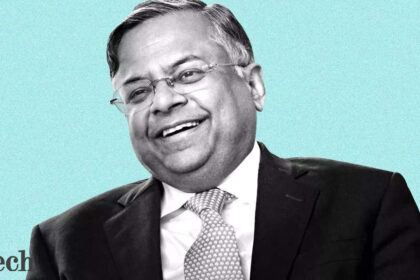The market drama in the second quarter of 2024 was all under the surface.
The S&P 500 index rose 3.9%. The Stoxx Europe 600 and Japan’s Topix did less well, but mostly held on to gains recorded during the first half of the year. However, the unremarkable headline numbers mask some striking trends.
Artificial intelligence has been the fuel propelling stocks since late 2022, and the second quarter of 2024 was no different. Within the S&P 500, companies related to the theme gained 14.7% in market value this past quarter, whereas the rest lost 1.2%. In June, chip maker Nvidia briefly became the world’s most valuable listed company. These aren’t purely speculative moves: Massive spending on AI has boosted earnings, which means that AI-related price-to-earnings ratios have remained relatively stable.
Yet, in previous quarters, AI valuations moved broadly in lockstep with the wider market. At the start of April, when investors became jittery about the S&P 500’s P/E ratio being too high, the selloff affected both AI and the rest.
Then something changed, and the two became disconnected: The AI corner of the market has now shot up beyond what is warranted by higher earnings forecasts, while valuations elsewhere remain below their March peak.
This pattern of divergence shows up in sector performance too. Tech led the way in the second quarter, followed by previously oversold telecoms and media companies — grouped as communication services. Utilities, which have become an AI play because of expectations that new data centers will stoke electricity demand, also did well. But six out of 11 sectors — healthcare, real estate, financials, energy, industrials and materials — lost market value.
It is also telling that “consumer staples,” which include must-buy household products and food brands, have outpaced the more cyclical “consumer discretionary” firms such as apparel retailers, restaurants and carmakers. Perhaps investors recognized that economic optimism had gotten out of hand. But they may also be becoming more cautious.
The low volatility of the S&P 500 points to a market without much to worry about. Daily moves have become less pronounced, with the calm close to prepandemic levels. But there is a catch: The actual shares that underlie the S&P 500 have recorded much higher price swings, leading to an almost-unprecedented gap between index and single-stock volatility. This is true even excluding AI-related companies.
It may be a result of investors themselves betting against volatility, which has in the past kept actual volatility misleadingly low. The structured products that have become popular among Americans may be having a particularly strong effect at the index level. Or perhaps, with most people today investing through tracker funds, top-down views on the market increasingly dominate.
Markets have had to accept that central banks, and especially the Federal Reserve, aren’t going to embark on the rate-cutting spree that was embedded into derivatives prices over the winter. In early April, the implied expectation that borrowing costs would be 1 percentage point lower or more by March of next year fell from more than 60% to less than 20%. It has ticked up a bit since.
Higher rate expectations haven’t reverberated across sectors exactly as the classic market playbook would suggest — tech hasn’t suffered, nor have banks benefited. But they have still had a subtle impact.
Beyond the AI champions, investors have looked kindly on large-capitalization companies with strong balance sheets, and punished ones that are short of cash. Among U.S. medium-size firms, for example, those with current liabilities exceeding their liquid holdings lost 5% of their combined market value during the quarter, compared with a roughly 1% drop for the rest.
Smaller companies generally have fared badly, but — unlike in previous AI-focused markets — financial strength, not size, has correlated better with performance. Higher borrowing costs are clearly hitting fragile businesses. This can also be seen in the high-yield bonds issued by companies rated triple-C or lower.
The Stoxx Europe 600 hasn’t matched the tech-driven rally of the S&P 500, but it has kept up while offering diversification in the form of pharma and luxury goods. In a predictable plot twist, though, political risk has returned, this time in France, where either a euroskeptic party or a tax-loving leftist alliance could win legislative elections. The CAC 40 has finished the quarter down 8.9%. Disaster is unlikely, but this is giving overseas investors a reason to avoid buying broad baskets of European equities.
Pessimists look at this splintered market and — quite reasonably — foresee a correction once the AI rally runs out of steam.
But there is also a more cheerful interpretation: Given the strength of the global economy, the fact that most stocks are cheaper than they were three months ago could lay the groundwork for broader-based gains once rates finally come down.



